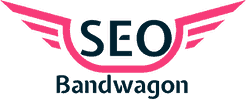Branding is how you distinguish yourself in a crowded and competitive marketplace. It’s not just your business name, and/or your logo, but it’s a collection of all of the sensory elements that make up your business and how your customers respond, interact, and remember their experience.
Branding is certainly its own skillset within marketing, and a useful exercise. Going through a branding exercise can help you realize important aspects about your business, customers, marketplace, or a complete unknown that can be the difference between success and failure.
Online branding is not that much different, but there are some key constraints to consider when creating your business and brand, especially compared to traditional brands. The biggest constraint is name availability.
Back in the Yellow Pages era, you could just add another ‘A’ to the beginning of your business name and you are even out ranking “AAA Bail Bonds,” alphabetically (placement has always been key). It isn’t so easy when it comes to Internet usernames, domain names, or other properties. Once they are gone, they are gone; and ranking things alphabetically just isn’t how the Internet works.
Business Branding Elements
- Business Name
- Domain Name
- Social Media Usernames
- Logo
- Font
- Color(s)
- Slogan
Business Name
This is obviously a big decision, and there is a lot to consider, and now domain names and social media usernames are part of the equation. If the {business name}.com is already taken and the social media usernames are taken, you may be back to the drawing board. It’s that important.
Domain Name
Your domain name is one of the most forward facing parts of your business. Unless you are running major media like TV, Google is likely your biggest source of traffic.
Try to keep your business domain name: memorable, short, and descriptive. Try to avoid words that have repeating characters e.g. yonkersseo.com or plumberssacramento.com, someone has to type that into a browser or email every time, you want to make that as easy and error-free as possible.
There is a good chance someone has already registered your business name or is speculating on your preferred domain, just waiting for you. We highly recommend Namecheap for registering your domain name. If your domain name isn’t available it may be worth reconsidering.
Or it may be worth considering just buying a complete website on Flippa.
Social Media Usernames
There are different rules for each social media platform, but the same rules basically apply, and if the username matches the domain without the extension, that’s perfectly reinforcing the brand name. For example our social media names are seobandwagon on Twitter, Facebook, Tumblr, Pinterest, and anything else that we sign up for, and we sign up to claim as many as we can. We used Knowem in our demo to check availability for Wynner Sweets and it was all available.
Logo
Your logo needs to be simple. SEO Bandwagon started out way too complicated, it works much better with simple vector art of the wings and our name in our font. Although, did it look pretty killer in space, which is pretty much what I asked for.

It is beautiful, but it doesn’t work as a social media avatar, more like a piece of art. You get 150 pixels, complex isn’t going to shine through. Clean straight lines, well-defined negative space, and unique shape will help make your brand memorable and help your logo look good in different settings. It has to look good on everything from Twitter feed, coffee cups, billboards, TV, letterhead, beer coozies, race cars, you name it.

We are going to be doing a follow-up post on logos after this, but basically we used Hatchful from Shopify.
Font
Your Font is likely to show up in the logo, or sometimes, it is the logo. Picking a web ready font is the best way to go. Obviously Coca-Cola isn’t going to be a web ready font, but it’s probably worth it to them to have their own font created, or SVG, to use for web publishing. Not every business needs that kind of brand, and a custom font in the logo is fine, but if you may need to purchase a license or subscription to Typekit.

Color
Your logo and brand should really look best in monochrome. Worst case scenario, someone is printing this on the office black and white and giving it to their boss. If you followed the instructions about clean lines, simple design, and negative space, your logo will look good in lots of colors, which also makes it a canvas if you want to make a special logo for PRIDE or the World Cup or something.

Slogan
Now that you have a font and color picked out, you can decide if you want your slogan in the logo or not. We opted for not. And we have changed the slogan several times. If you are using a slogan, I think it really makes sense to use a web-ready font so that is is consistent every time you use it in every medium.

Personality/Tone
After it goes through committee it is going to sound pretty stuffy. If that is what you are going for, fine, but it’s not very interesting for anyone to read. Your content needs to connect with your customer’s intent and that means you need to connect with them emotionally because that is how people make decisions. Maybe you don’t need to swear to sell insurance, you might need to swear a little bit to sell movies or music. Whatever line of work you are in your tone and style is something you can develop over time the more you write. But whatever it becomes it needs to be authentic. It’s written by you, or the company employees, it should reflect their experiences and the company values.
Memories & Nostalgia
A great brand experience is really about creating that memory that people want to repeat. Brand value is built over time by those experiences, the colors, packaging, logo, you can’t buy those experiences or memories with a design agency and they don’t fix problems with your product. Branding really only works if you are reinforcing positive experiences.




